For 4 weeks in September-October, Melbourne taps in to all things fringe – including the local furniture scene. Alice Blackwood journeyed out to the Abbotsford Convent to check out the Fringe Furniture exhibition.
October 11th, 2011
This year themed Dancing in the Dark, the Fringe Furniture exhibition (held as part of the Melbourne Fringe Festival, 21 September-9 October) showcased a fresh array of furniture and lighting pieces which offered up small solutions to big problems.
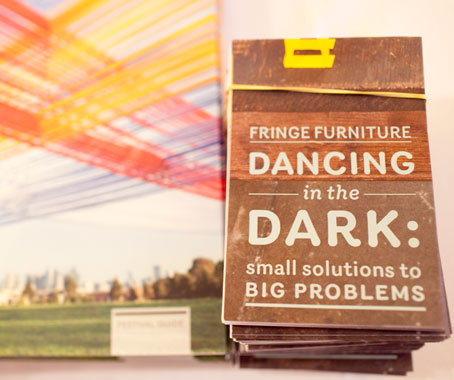
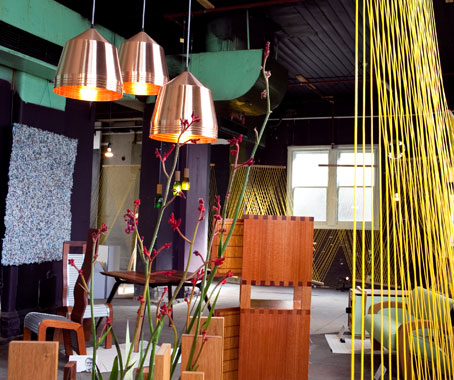
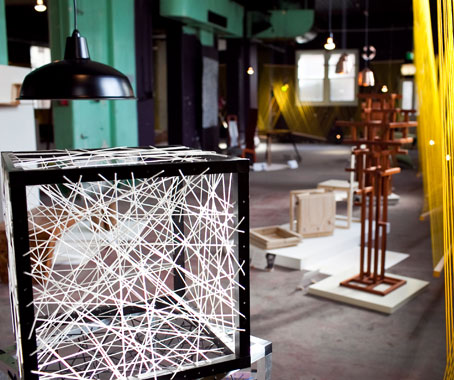
The exhibition was designed by Justin Hutchinson, who showed us through the furniture-filled space, sheltered within the peeling walls of the Abbotsford Convent complex.
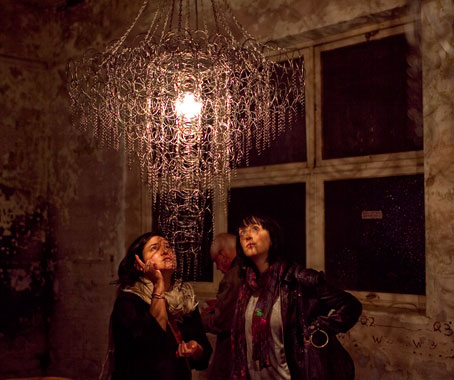
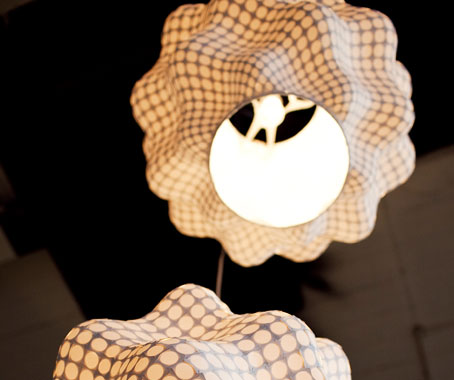
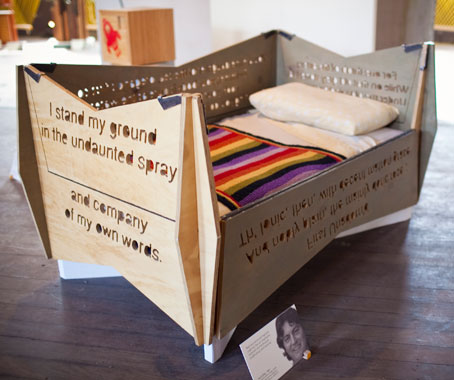

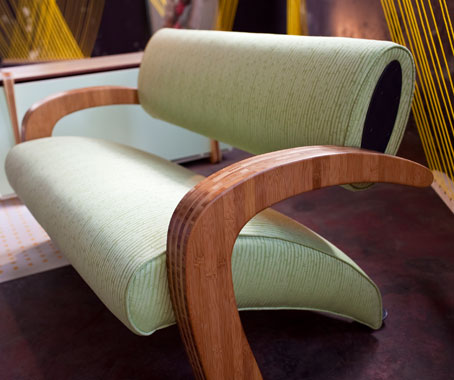
“Fringe Furniture has always attracted a wide range of designers and artists,” Hutchinson explained.
“It addresses the two fundamentals of furniture design, ’culture’ and ’technology’.
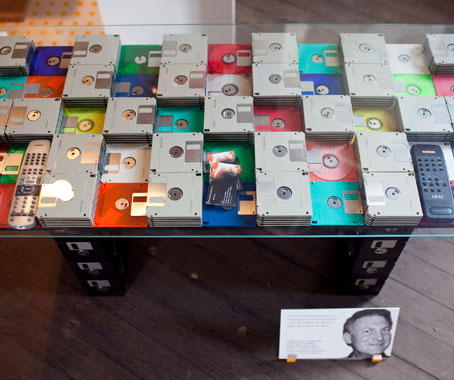
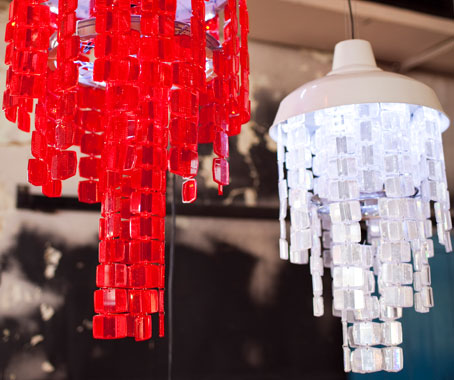
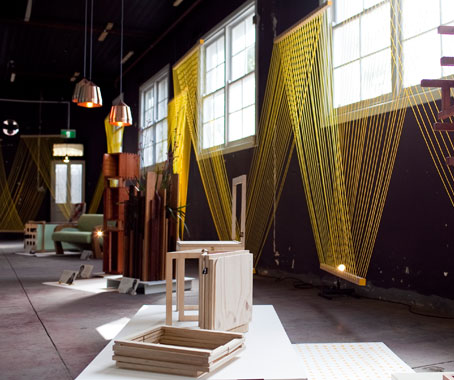
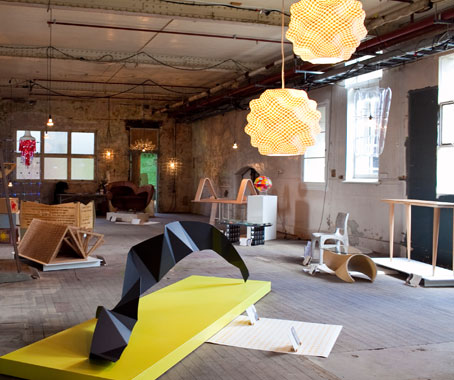
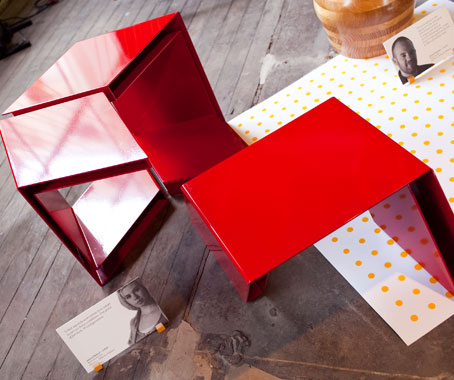
“Furniture as I see it, is the intersection of the two and why it is important to document and exhibit works like these annually.”
Stand-out pieces in this year’s edition included Sebastian Clarke’s ’2KiloWatts’ lights – which “successfully embed recycled and historic materials into a clean, modern and commercial aesthetic,” said Hutchinson.
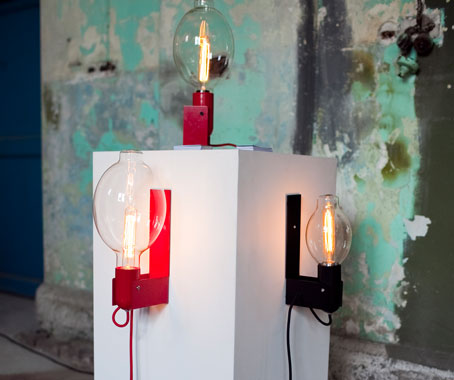
True to word, Clarke constructed his ’globes’ from discarded 2000-watt globes, otherwise destined for landfill.
“David Durance’s furniture piece was also a stand-out,” said Hutchinson, “as it showed true innovation, and attempts to push the boundaries.”
Here Durance built a feather-light yet durable chair from salvaged cardboard cartons (used for the base frame), and covered this with several layers of paper.
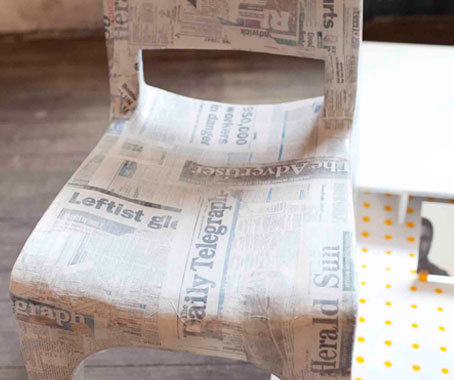
The newspaper itself was sourced from News Limited, and emblazoned with Murdoch Press-related headlines.
Of the space itself, “the greatest challenge was to unify and celebrate [it], while also providing a cohesive backdrop and memorable exhibition,” said Hutchinson.
Streams of yellow ribbon were installed in a comb-like wave around the far edges of the space, directing the flow of visitors while also referencing the Melbourne Fringe Festival’s colourful collateral.
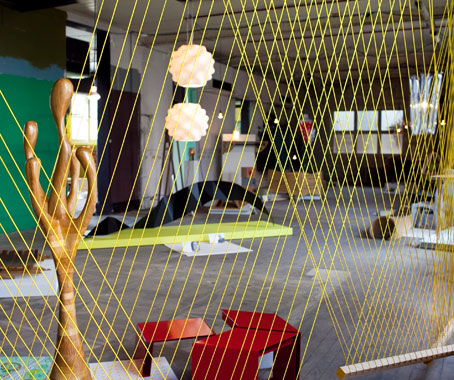
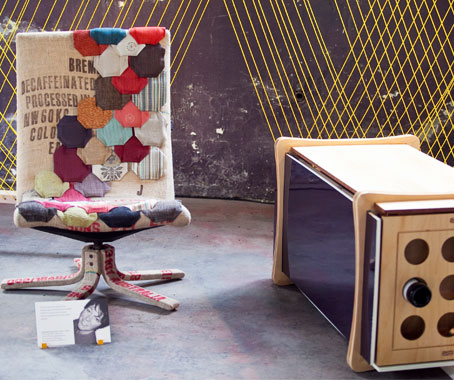
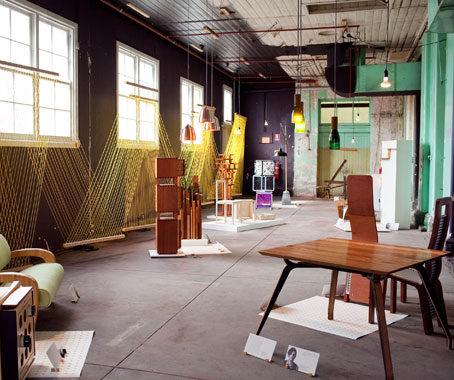
A veritable hunting ground for new talent, the Fringe Furniture exhibition this year revealed a fresh pool of talented furniture makers, artisans and designers.
As Hutchinson said – “Craft is now… so the Fringe is in vogue!”
Photography: Katie Harmsworth
INDESIGN is on instagram
Follow @indesignlive
A searchable and comprehensive guide for specifying leading products and their suppliers
Keep up to date with the latest and greatest from our industry BFF's!

Gaggenau’s understated appliance fuses a carefully calibrated aesthetic of deliberate subtraction with an intuitive dynamism of culinary fluidity, unveiling a delightfully unrestricted spectrum of high-performing creativity.

The undeniable thread connecting Herman Miller and Knoll’s design legacies across the decades now finds its profound physical embodiment at MillerKnoll’s new Design Yard Archives.

For Aidan Mawhinney, the secret ingredient to Living Edge’s success “comes down to people, product and place.” As the brand celebrates a significant 25-year milestone, it’s that commitment to authentic, sustainable design – and the people behind it all – that continues to anchor its legacy.
The director and founder of ’Asylum Creative’ is one crazy communicator with a fervent passion for design.

Amidst the bustle of Salone del Mobile, we sat down with Moroso creative director, Patrizia Moroso.
New York product designer Stacy Garcia teams up with design-led company Brintons to launch a fashion-inspired carpet collection.

The brief for the new Government Agency office in Canberra was a challenging combination of high performance and high concept. The Mill Architecture + Design turned to Milliken to bring the ambitious project to life.
The internet never sleeps! Here's the stuff you might have missed
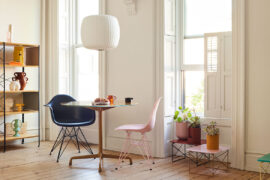
For three-quarters of a century, the iconic Eames Shell Chair has redefined the very act of sitting with its groundbreaking form, proving that, rather than restrict, the right mould can embrace every space, need and individual aspiration.

The Melbourne-based interior designer is celebrating his eponymous practice’s quarter-century. He joins Timothy Alouani-Roby at The Commons during a flying visit to Sydney to discuss this milestone and much more.